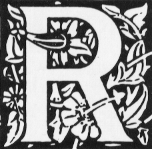
Military Medicine in the Middle Ages


|
Military Medicine in the Middle Ages |

|
Updated 17 June 2007
Introduction:
So figure 1 to 500
So medieval armies didn't need very many medical providers.
Anglo-Saxons/Normans:
Crusades:
Spanish Reconquista:
Hundred Years War:
Battle of Agincourt:
Its not much of a stretch in my mind, to think that the above would obligate the lord and his vassal to provide medical care for each other to "cause harm to be removed" and to ensure that "what is good is done also".
In "modern" armies, support staff (cooks, mechanics, etc.) are considered part of the "army" and their fates are included in the casualty reports. The named Crusaders (therefore upper class) would have considered themselves "front-line" combatants, hence the casualty ratio similar to the modern Combat Zone forces. Medieval support staff made up the "camp followers" and do not seem to be included when sizes of medieval armies are given.
The above based on the Humoral Theory of Medicine. If one is exposed to too much heat, cold, moisture, and/or dryness - humoral imbalance and disease will occur. This is prevented using the Doctrine of Opposites - if there is too much heat, provide cooling foods and activities to your soldiers.
Control bleeding (done 1st if bleeding excessive)
Sutures:
Wound Medications:
Dressings:
Supportive Treatment:
Period Controversies:
Signs of skull fracture given in period medical texts:
If there is paralysis, it will be on the side of the body opposite to the injury in the head
If the skull is fractured:
Skulls have been found with healed examples of such procedures.
Supportive care:
Frederick I Barbarossa – drowned on Crusade at nearly 70yrs old
Richard I – survived fevers on 3rd Crusade, died of complications of arrow wound in France
Louis IX – survived dysentery on 7th Crusade, only to die of fever on his 2nd crussade
25-35% of high-ranking Crusaders died during the 2-3 year expeditions
Henry V – survived removal of arrow deeply imbedded in cheek
Joan of Arc – survived two arrow wounds (shoulder and thigh), and blow to the head from a stone
Towton mass grave - 9 of the bodies had a total of 16 separate old skull injuries (well-healed with no evidence of infection). One had survived a blow to the lower jaw which broke it into at least 3 pieces, and left a piece of bone missing. This also healed with no signs of infection
There was military medicine in the Middle Ages!
De Re Militari website. Primary Sources on Medieval and Renaissance Military History. www.deremilitari.org/resources/sources/
Fiorato, Boylston and Knusel, editors. Blood Red Roses: The archeology of a mass grave from the Battle of Towton AD 1461
FM (Field Manual) 8-55: Planning for Health Service Support. Headquarters, Department of the Army.
Getz, Faye M. Healing and society in Medieval England: a Middle English translation of the pharmaceutical writing of Gilbertus Anglicus. University of Wisconsin Press, 1991.
Getz, Faye M. Medicine in the English Middle Ages Princeton University Press. 1998.
Gottfried, Robert S. Doctors and medicine in medieval England, 1340-1530. Princeton University Press, 1986.
Griffith, Paddy. The Viking Art of War.
Jones, Archer. The Art of War in the Western World.
Jones, Peter M. Medieval medical miniatures. British Library with Wellcome Institute. 1984.
Keen, Maurice, editor. Medieval Warfare: A History.
Macer, Floridus. A Middle English translation of Macer Floridus De viribus herbarum. Harvard University Press, 1949.
McVaugh, Michael R. “Arnald of Villanova’s Regimen Almarie (Regimen Castra Sequetium) and Medieval Military Medicine.” Viator: Medieval and Renaissance Studies.
Mitchell, Piers D. Medicine in the Crusades: Warfare, Wounds and the Medieval Surgeon. Cambridge University Press. Cambridge, UK, 2004
Prescott, Elizabeth. The English medieval hospital, c. 1050-1640. Seaby, 1992.
Rawcliffe, Carole. Medicine & society in later medieval England A. Sutton, 1995.
Regiment sanitatis Salernitanum. Ente Provinciale per il Turismo. 1966?
Rosenman, Leonard, translator. The Surgery of William of Saliceto.
Talbot, Charles H. Medicine in medieval England. Oldbourne, 1967.
Walsh, James J. Medieval medicine. A. & C. Black, 1920.